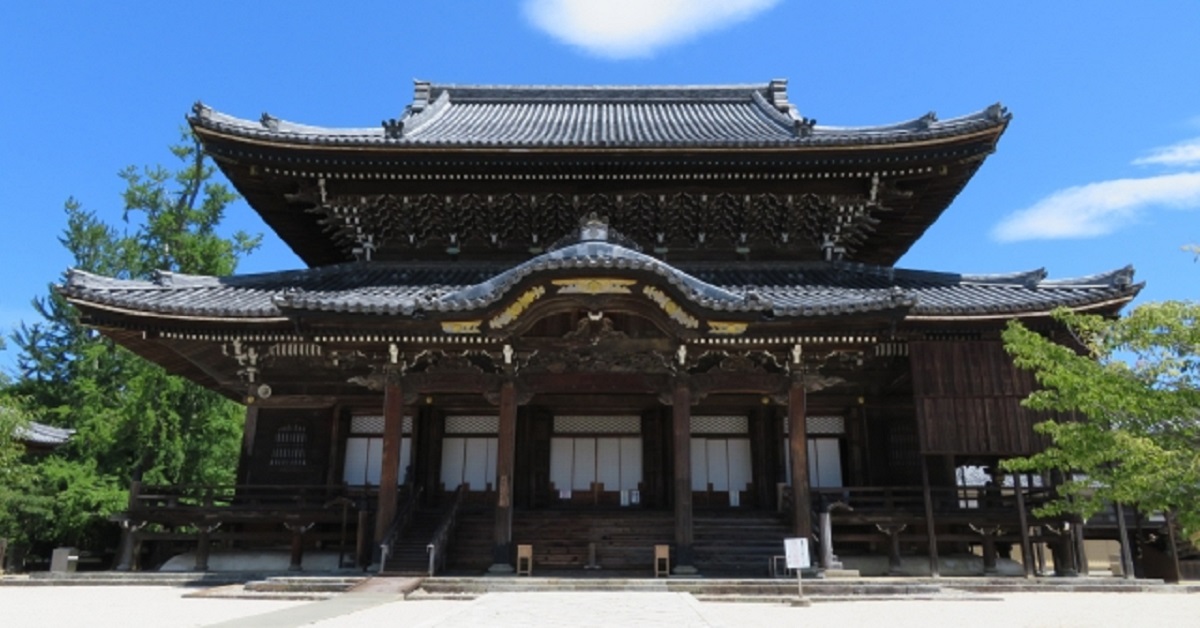Step into the grounds of Senjuji Temple in Tsu City, Mie Prefecture, where two magnificent halls, the Miedo and Nyorai-do, stand as National Treasures. These wooden structures, built in the Edo period, offer visitors a chance to experience both spiritual depth and architectural brilliance rarely found outside of Japan’s major historic cities.
What is Senjuji?
Senjuji (Senju-ji) was founded during the Kamakura period and serves as the headquarters of the Jodo Shinshu Takada School. The vast temple grounds include several important halls and provide visitors with an atmosphere of solemn tranquility. Over the centuries, the temple has been repaired many times and lovingly preserved by the local community.
| Item | Description |
|---|---|
| Sect | Jodo Shinshu Takada School |
| Founded | Kamakura period |
| Location | Isshinden Town, Tsu City, Mie Prefecture |
| Role | Head temple, center of faith and culture |
Why It Became a National Treasure
The Miedo and Nyorai-do are masterpieces of wooden architecture from the Edo period. In 2017, they became the first buildings in Mie Prefecture to be designated as National Treasures.
| Evaluation Item | Description |
|---|---|
| Architectural Style | Representative temple architecture of the Edo period |
| Historical Value | Important halls enshrining Shinran Shonin |
| Artistic Value | High-quality wood carvings and decorative work |
| State of Preservation | Original appearance well maintained |
This recognition goes beyond age alone, emphasizing their role as living symbols of faith and culture passed down through generations.
Features of the Miedo
The Miedo is the main hall enshrining an image of Shinran Shonin, the founder of Jodo Shinshu. Inside, the vast wooden space carries the scent of timber and an air of silence. The beams and pillars still display the skills of Edo-period craftsmen, with remarkable attention to detail. Here, visitors can appreciate both the religious significance and the refinement of Japanese wooden construction.
| Feature | Description |
|---|---|
| Main Deity | Image of Shinran Shonin |
| Scale | Large wooden hall |
| Interior | Elaborate woodwork |
| Atmosphere | Quiet and solemn |
Features of the Nyorai-do
The Nyorai-do enshrines Amida Nyorai (Amida Buddha) and is considered the religious symbol of the temple. Its exterior is majestic, while the interior features a splendid altar decorated with gold leaf and lacquer.
| Feature | Description |
|---|---|
| Main Deity | Amida Nyorai |
| Interior | Lavish altar with gold leaf and lacquer |
| Religious Role | Center of worship and rituals |
| Architectural Appeal | Combination of strength and elegance |
Together with the Miedo, the Nyorai-do represents the spiritual power of Senjuji as a whole.
Appeal for Foreign Visitors
For international travelers, Senjuji offers a rare chance to experience both Japanese religious culture and architectural beauty. Unlike the often-crowded temples of Kyoto and Nara, Senjuji provides a quieter and more contemplative atmosphere.
| Visitor Benefit | Description |
|---|---|
| Peaceful Visit | Less crowded and calm environment |
| Architectural Experience | Close view of Edo-period wooden structures |
| Cultural Insight | Learn about Japanese faith and artistry |
| Photography | Beautiful seasonal scenery with temple buildings |
Access and Travel Tips
- Location: Isshinden Town, Tsu City, Mie Prefecture
- Nearest station: About 10 minutes on foot from JR Isshinden Station
- Highlights: Miedo and Nyorai-do, seasonal scenery
The temple grounds harmonize with nature throughout the year, with cherry blossoms in spring and brilliant autumn leaves, creating scenes that represent the essence of Japanese culture.
Preservation Efforts Supporting Historical Value
Senjuji remains well-preserved thanks to the dedicated efforts of local residents and monks. Restoration has included replacing wooden parts and reapplying lacquer and gold leaf. These continuous efforts have ensured that the Miedo and Nyorai-do are not just relics of the past but living spaces of faith still in active use today.
| Preservation Work | Effect |
|---|---|
| Repair of wood | Long-term durability |
| Lacquer and gold leaf renewal | Maintenance of interior brilliance |
| Monastic care | Continuity as a sacred site |
| Community involvement | Shared awareness of cultural heritage |
Conclusion
The Miedo and Nyorai-do of Senjuji are National Treasures where faith and architectural beauty converge. For foreign visitors, they offer not only an opportunity to admire magnificent wooden architecture but also a chance to understand Japan’s spiritual traditions and cultural aesthetics. A visit is more than sightseeing—it is a meaningful encounter with history and faith.






